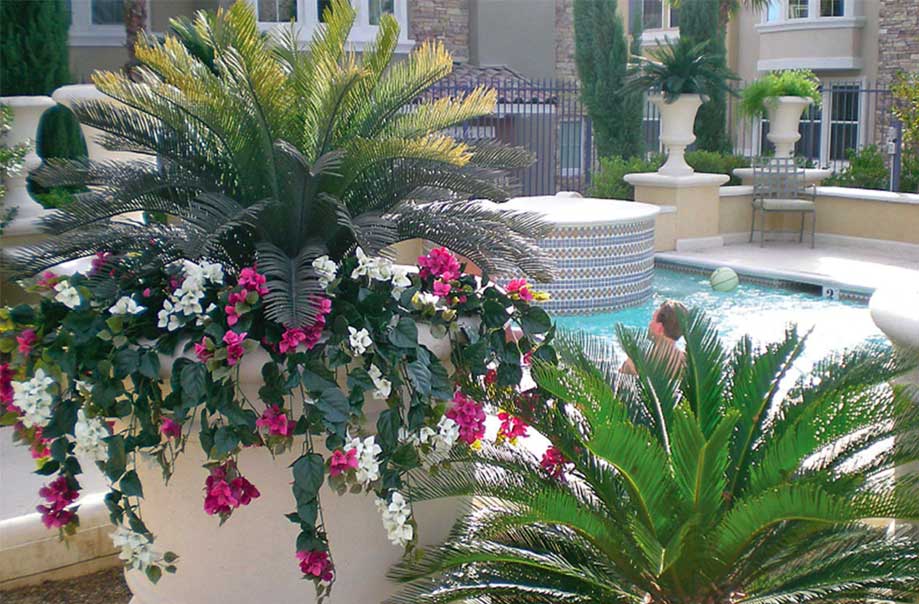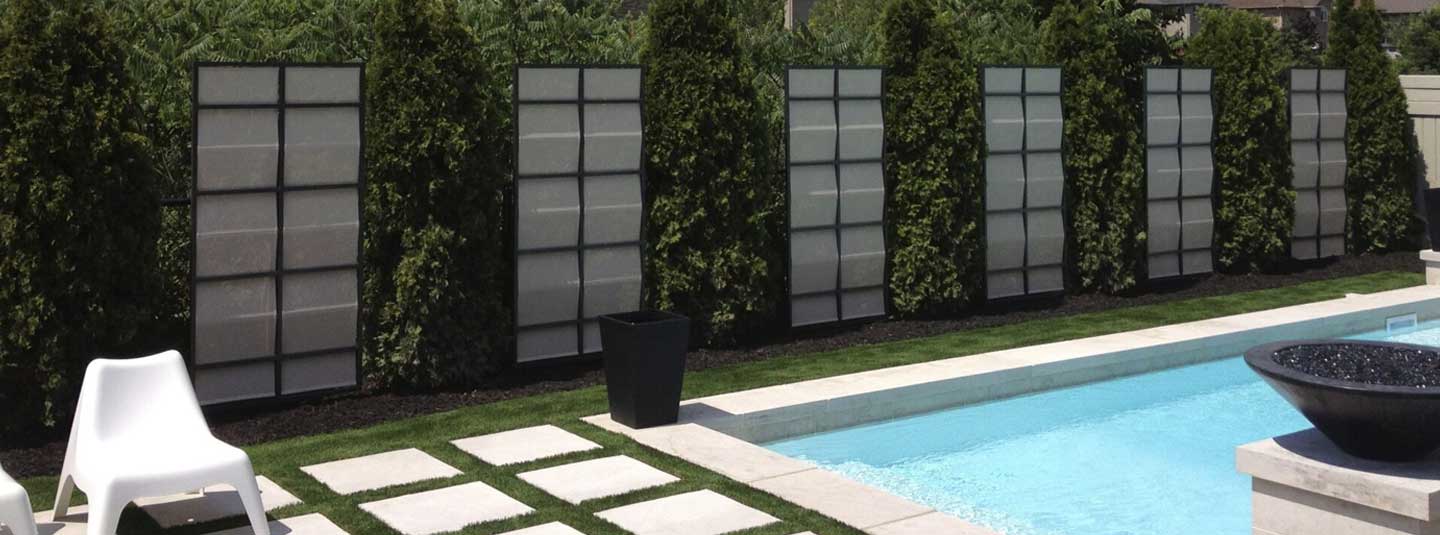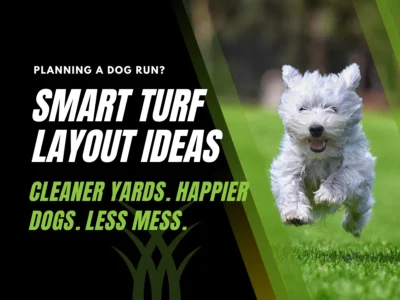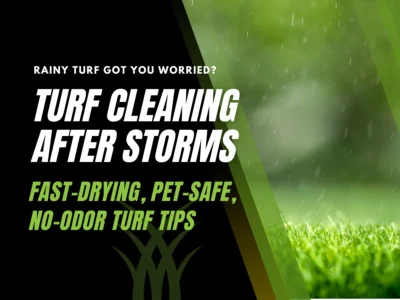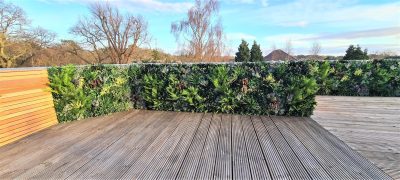Welcome to our ultimate guide on the best synthetic grass for pets, where we’ll unveil the perfect landscaping solution for pet owners. Say goodbye to muddy paws and tedious maintenance with our pet-friendly synthetic turf. In this article, we’ll explore the numerous benefits of synthetic grass designed specifically for dogs, including its durability, easy maintenance, and ability to create a safe and enjoyable outdoor environment. Get ready to transform your yard into a haven for your furry friend, while also keeping your space looking pristine year-round.
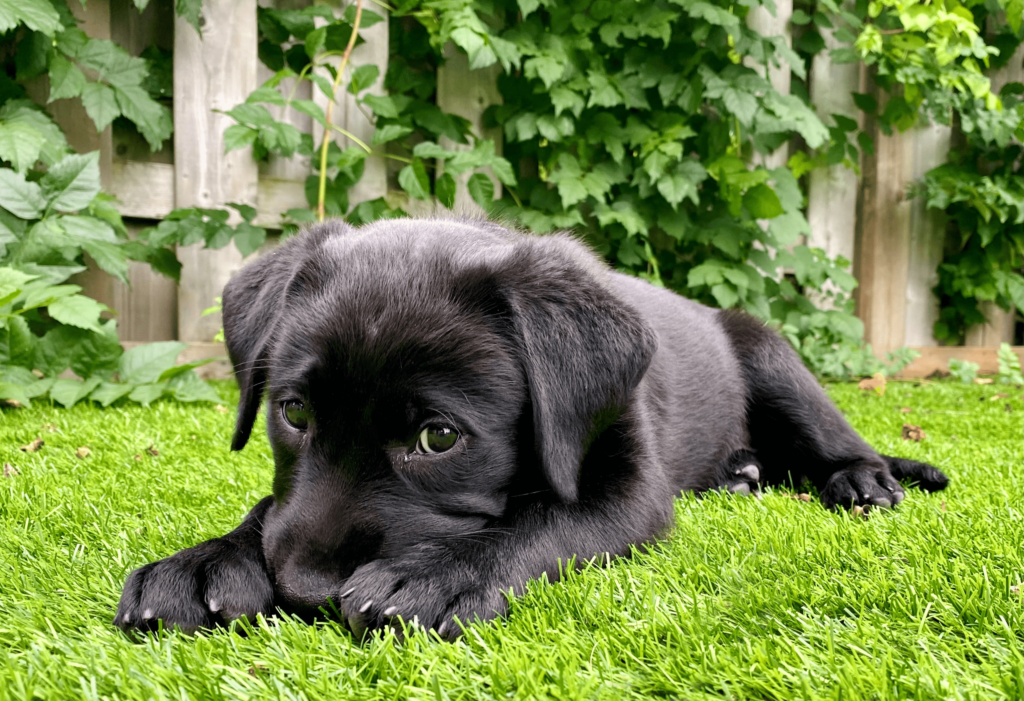
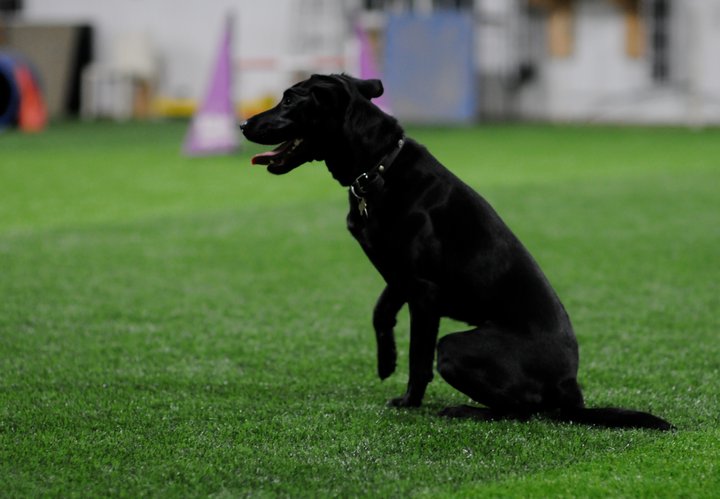
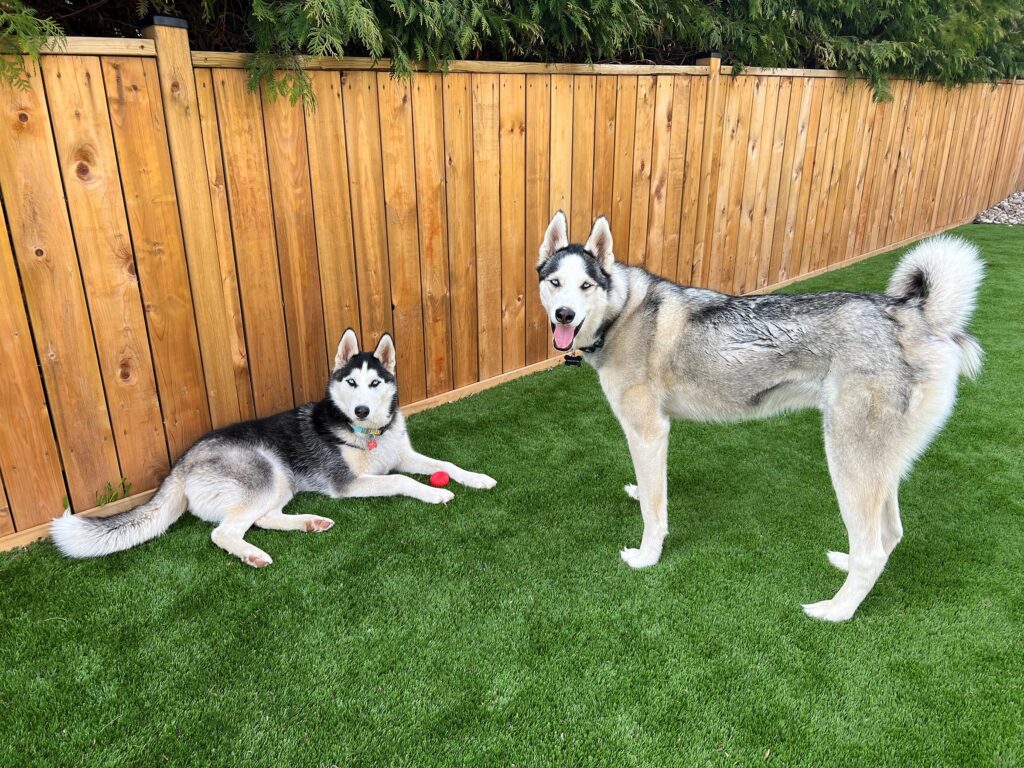
Should I Use Synthetic Turf For Dogs?
There are a lot of misconceptions when it comes to fake grass for dogs and whether you should use it for your backyard. It is important to note that not all synthetic grass products are created equally and may not be the best option for your pet. Below we cover the pros and cons of synthetic grass for dogs including if premium synthetic grass is right for you and your beloved pet.
Pros of Premium Synthetic Grass:
- Extremely Durable
- No Bare Spots or Dead Grass
- No Unpleasant Odours
- No Muddy Paws
- No Infill Required
- Low Maintenance
- No Mowing
- No Weeds
- No Toxic Chemicals
- No Puddles
- Hypoallergenic
- Pest-Free
Cons of Synthetic Turf:
- Cheaper synthetic grasses can have stiff, uncomfortable grass blades that bend and break
- Low-quality turf can get too hot for pets
- Synthetic grass with infill can hold onto foul odours from pets
- Infilled turf requires more maintenance
- Cleaning products used to deodorize infill can cause irritation
Converting to a synthetic grass lawn can be a big investment. We always recommend being thorough in your research before committing to a synthetic grass solution so you can rest easy knowing you and your pet will love your new evergreen lawn.
Is Synthetic Grass Safe for pets? Ensuring a Pet-Friendly Environment
Ensuring the health and safety of our furry best friends is of the utmost importance as pet owners, so naturally you want the right play surface for your pet. Not all turf products are created equal; older generations of synthetic turf can split and fray and contain infill, causing irritation and creating hazards for pets. Infill harbours odours and bacteria, and is nearly impossible to clean. Premium non-infill synthetic grass is designed for easy maintenance and durability, providing the best synthetic grass for pets that is 100% safe, non-toxic and pet-friendly for your pets to play and relax. With non-infill synthetic grass, your pet can enjoy a clean and hygienic outdoor space without compromising their well-being.
Does Synthetic Grass Get Too Hot for Pets? Stay Cool in Warm Climates
One common concern among dog owners is whether synthetic grass can get too hot and cause burns on their dog’s paws. High-quality synthetic grass for dogs is designed to mitigate this risk. Opt for products with built-in heat resistance and cooling properties, which help to dissipate heat and keep the grass surface comfortable, even on hot summer days. Older, low-quality synthetic turf products are more likely to heat up substantially, up to 140 degrees Fahrenheit, and cause discomfort as they retain heat and be too hot for pets in the summer. Newer generations of synthetic grass made with modern technologies closely align with natural grass temperatures, with a 5-15 degree difference making it completely safe for dogs in warm climates.
Selecting a premium synthetic grass product with a resilient structure and soft, non-abrasive fibers will enhance paw protection by staying cooler even in hot weather. Non-infill synthetic grass like AGL Grass can also easily be hosed down in the summer to further cool down a patch of grass for your furry friend.

How to Clean Fake Grass After Your Pet: Easy Maintenance Tips
synthetic grass offers a low-maintenance alternative to natural grass. Cleaning synthetic grass for pets is relatively simple and hassle-free. Follow these steps to keep your synthetic grass clean and fresh:
- Regularly remove pet waste: Pick up any solid waste using gloves or a waste bag.
- Rinse with water: To remove any messy situations or to refresh your lawn, use a hose, sprinkler system, or power washer to rinse the grass blades and wash away any remaining waste or urine. This step helps maintain hygiene and eliminate odours. All non-infill synthetic grass can be hosed down or power-washed without any added cleaning products. Synthetic grass with infill cannot be easily cleaned due to the infill particles which will be dispersed between the grass blades and often require strong cleaning agents or hiring a turf cleaning company.
- Use pet-friendly cleaners: If you have an infill synthetic grass system, be sure to choose pet-friendly synthetic grass cleaners. These cleaners are specifically formulated to tackle pet messes without damaging the grass fibres or impacting your pet’s health.
How Much Does Synthetic Grass for Pets Cost?
Well, it depends. The cost of synthetic grass for pets varies based on a variety of factors like quality of materials, size of area, if a base needs to be installed, and whether it requires infill or not. Much like other home improvement investments, you get what you pay for when it comes to synthetic grass for pets. Cheaper turf products will often be made of low-quality, toxic materials that will not last against repeated wear and tear from rambunctious pups. Low-quality synthetic grass is often stiff and harsh and is marketed as requiring infill to keep the grass blades upright, which introduces more labour and costs upfront and as the years progress. The stiff blades, even with infill, will break over time and matte down, so you will most likely be replacing your lawn before the expected 10-15 years. High-quality non-infill synthetic grass is mitigates these issues, and ensures a luxurious, soft feel that is better than natural grass. Investing more upfront by choosing a premium product will save you costs in the long term with added durability, cleaner production, and low maintenance.
Will My Pet Get Fleas from Synthetic Turf?
Synthetic turf is great for getting rid of pesky bugs like fleas and ticks from your yard. Since synthetic grass is inorganic, ticks and fleas are not attracted to the grass so relax knowing they won’t be getting on you or your pet’s fur!
Is Infill Synthetic Grass Good For Pets? Debunking Myths
Infill is an additive used in older, outdated turf technologies. The idea behind its use was to keep the grass blades upright and prevent matting, but it quickly became evident that it was not the case. Not only were the grass blades still folding over and breaking, resulting in matting, but the infill would stick to pet fur and shoes, bringing it into the home. There are various kinds of infill, some natural like sand, coconut, and walnut shells, but most of the infill on the market are synthetic like envirofill or zeofill. All infills possess a potential risk to your pet’s health and will trap and harbour foul odours from pet waste (much like a litter box), breeding a host of not-so-nice bacteria. We recommend a non-infill synthetic grass option that is made of premium materials, soft yet durable, and rebounds naturally after compression all without the use of messy infill.
Is Fake Grass Better for Pets? The Benefits of Turf
Synthetic grass offers numerous advantages over natural grass, making it a better choice for pets:
- Enhanced Durability: Synthetic grass designed for pets is engineered to withstand heavy use, even after extensive play and activity. Premium turf is also stain-resistant and never fades, so you can enjoy a green lawn 365 days of the year.
- Reduced Maintenance: synthetic grass eliminates the need for mowing, watering, and fertilizing, allowing for more playtime with your furry friend.
- Hygienic and Odour-Free: Pet-friendly Synthetic grass features effective drainage systems that prevent urine accumulation. By choosing a non-infill synthetic turf, you are also eliminating the use of infill which holds onto pet waste and odours, creating a “litter box” effect.
- Comfort and Safety: Non-infill synthetic grass provides a soft and comfortable surface made of the best materials that minimize the risk of injuries and sickness and maximize enjoyment for your pets.
Best Synthetic Grass for Pets: Finding the Perfect Fit
We all want the best for our pets, and choosing the right synthetic grass that is safe for them and meets their needs can be a challenge. With a wide range of options available on the market, we’ve gathered a list of things to consider before purchasing synthetic grass for your pets.
- The Quality of Materials Used
- How Soft It Feels
- Durability
- How Well It Drains
- Height and Density
- Heat Resistance
- Infill or Non-Infill
- Maintenance
- Sustainability
Synthetic grass for pets has proven to be the superior choice for pet owners, providing a safe, comfortable, and low-maintenance outdoor space. By selecting synthetic grass for pets specifically designed for pets, you can create an environment that safeguards your furry friend’s well-being. While AGL Grass offers a synthetic grass for pets, all of our grass products are 100% safe for pets to play on.
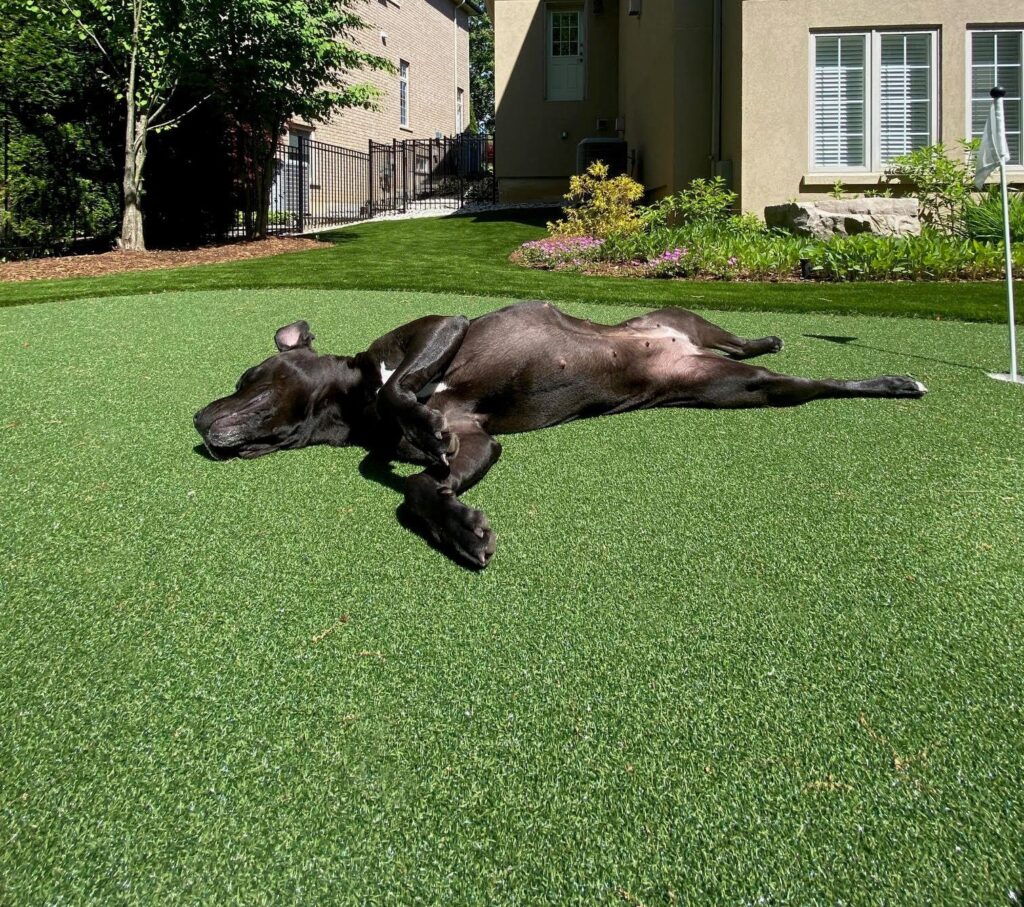
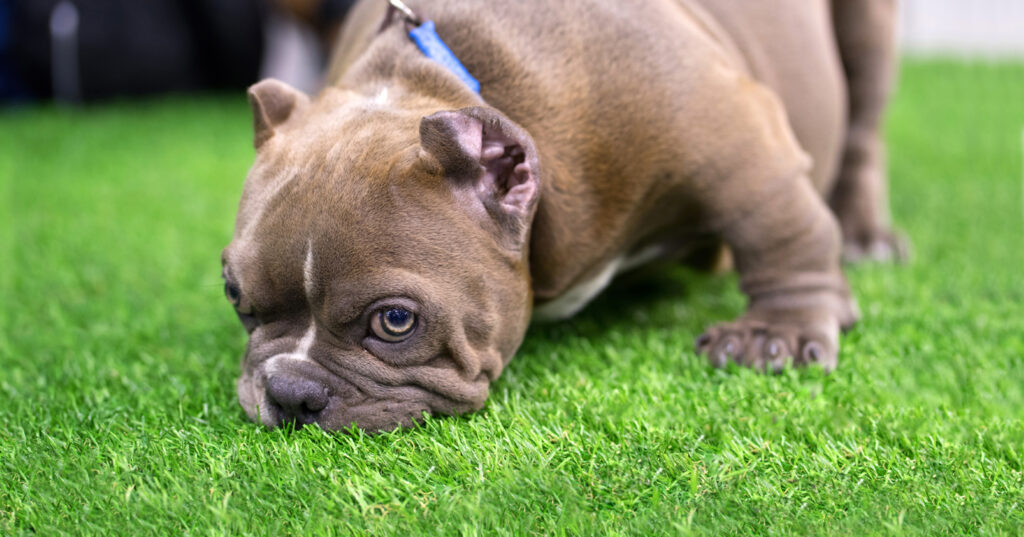
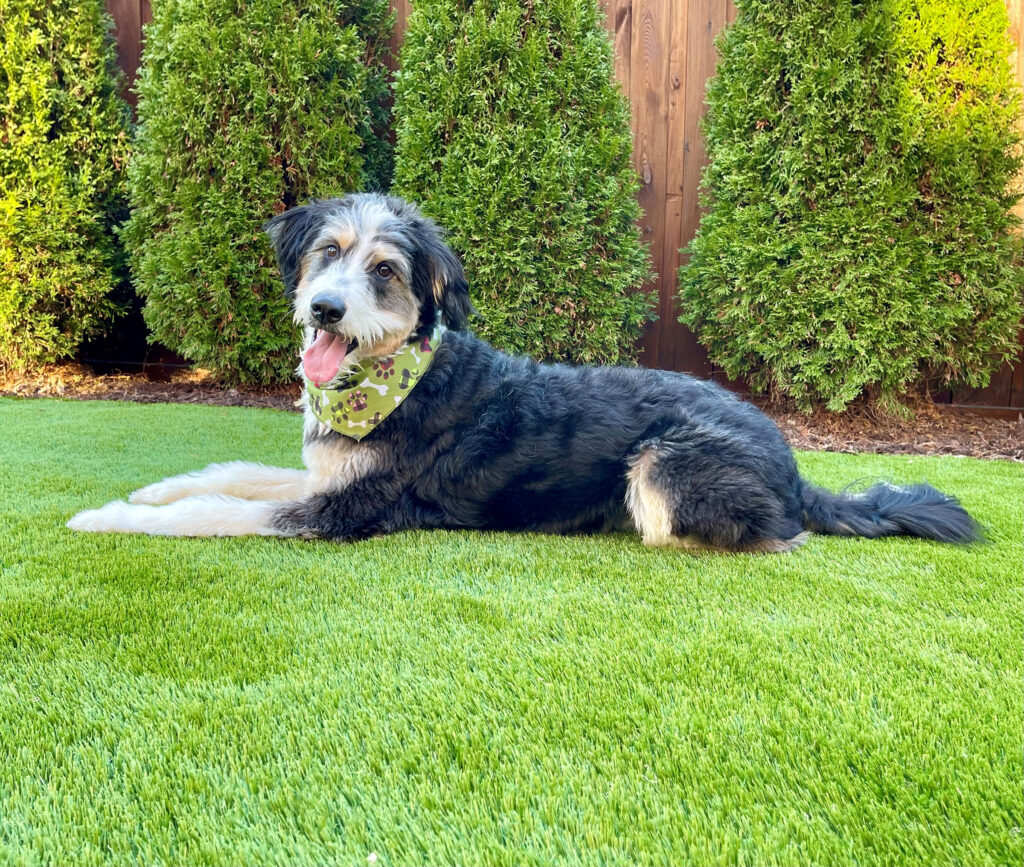
Choosing the best synthetic grass for pets can transform your yard into a pet-friendly paradise. With its durability, easy maintenance, and ability to create a safe and enjoyable outdoor environment, synthetic grass for pets offers numerous benefits for both you and your furry friend. By investing in premium synthetic turf, you can say goodbye to muddy paws, unpleasant odours, and the hassle of constant maintenance.
It’s important to research and select a high-quality product that is safe, non-toxic, and specifically designed for pets. By prioritizing factors such as heat resistance, drainage, and the absence of infill, you can ensure a clean and hygienic space for your pet to play and relax. So, make the switch to synthetic grass for pets and create a pet-friendly haven that remains lush and vibrant all year round.




